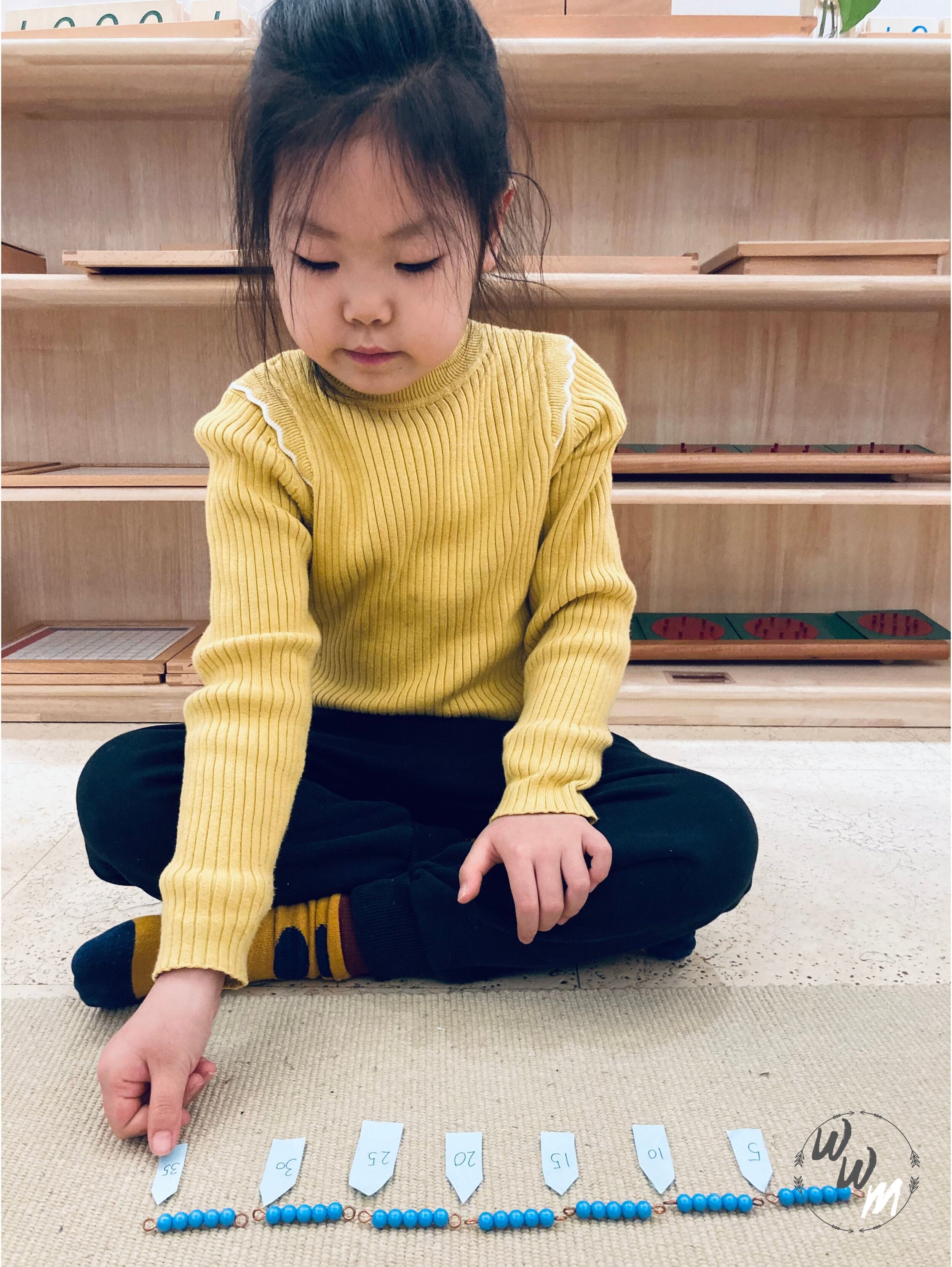Bead chains: showing the cube of a number
What materials do we use for this activity?
For this activity, we use The cube chain for the number, The cube for the number, All the squares of the number, The large box of markers for the number, and A felt-lined tray.
Bead Chains: showing the cube of a number
How we show the child the cube of a number with the Bead Chains
The directress begins by asking the child to bring his tray to the shelf to collect the materials and take them back to the floor mat, the child places the cube of five chain, all of the matching squares, the box of markers, and the cube on his tray and unpacks them on the floor mat.
The directress unravels the cube chain horizontally on the floor mat and encourages the child to notice how long it is. She then tells the child that they will be making the cube of five. She shows the child how to fold the cube of five chain into a square, folding it from the left to the right each time. She then places the square above the folded chain and compares the two.
The directress continues folding the chain to the right of the first square until a new square is formed. She places a square above the chain to compare the two each time. She continues in the same manner with the child’s assistance in folding the entire chain with the squares placed above the chain to compare.
The directress then stacks all of the squares on top of each other to form a cube. She then places the cube next to it to compare the two. The directress unravels the chain horizontally on the floor mat and tells the child that they will be counting how many beads it takes to make the cube of five.
The child assists the directress in removing the markers from the box and laying them out randomly on the floor mat. The directress begins to count, placing a marker at each bead for the first section. The child is encouraged to count aloud and place a marker at each multiple of five.
Once all of the markers have been placed down, the directress skip-counts with the child (5, 10, 15, 20, 25….. 125) She tells the child “so the cube of five is one hundred and twenty-five”
What does the child learn by doing this activity?
The child learns to skip-count in linear form, this activity promotes visual discrimination, prepares the child for multiplication, and teaches the child to work out the square of a number in a concrete way.
Looking for more Montessori activities?
Here is a list of all the Montessori Maths activities including Early Maths, Introduction to the Decimal System, Seguin Boards, The Hundred Board, The Short Bead Stair, Bead Chains, The Snake Game, Group Operations, The Large Number Rods, Recording with the Small Number Rods, The Short Bead Stair, The Strip Boards, The Boards, The Stamp Game, The Abacus, The Dot Game, and Fractions. Just click on the page you want to learn about to go there.
Early Maths
Introduction to the Decimal System
The Short Bead Stair
Seguin Boards
The Hundred Board
Bead Chains
The Snake Game
Group Operations
Large Number Rods
Recording with the Small Number Rods
The Short Bead Stair
The Strip Boards
The Boards
The Stamp Game
The Abacus
Operations with the Abacus: Static addition (without change)
Operations with the Abacus: Static multiplication (without change)
Operations with the Abacus: Static subtraction (without change)
The Dot Game
Fractions

